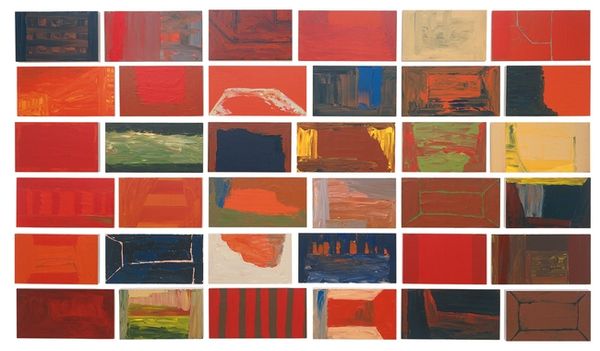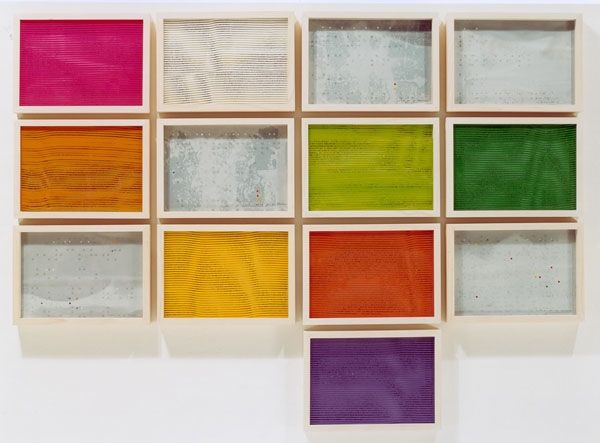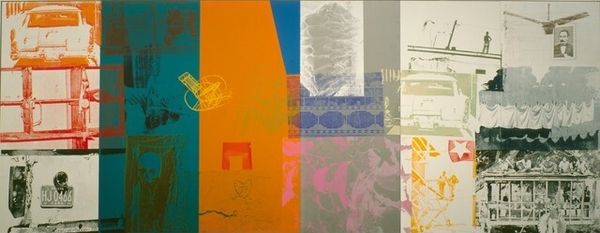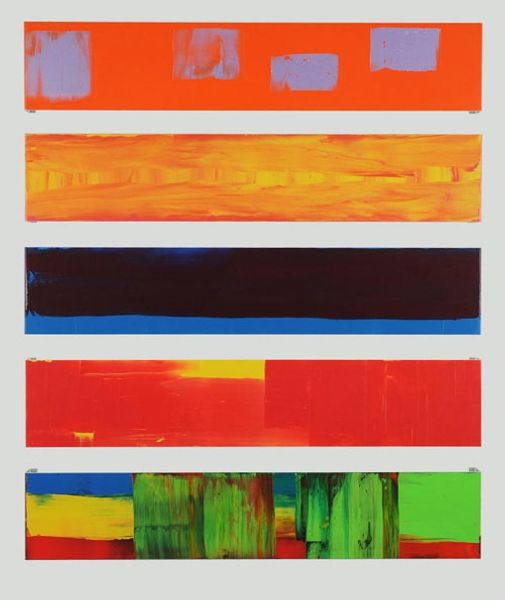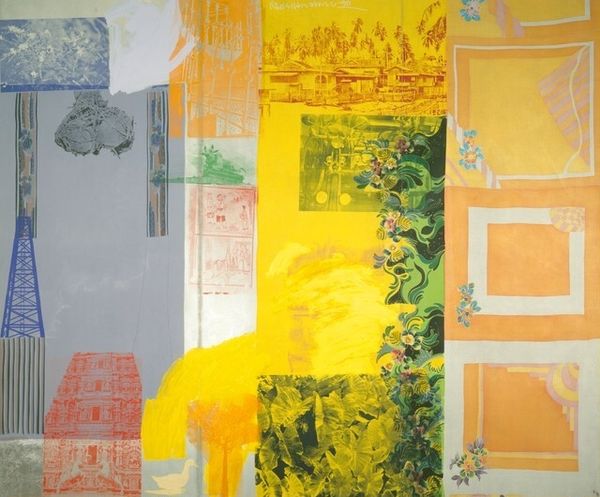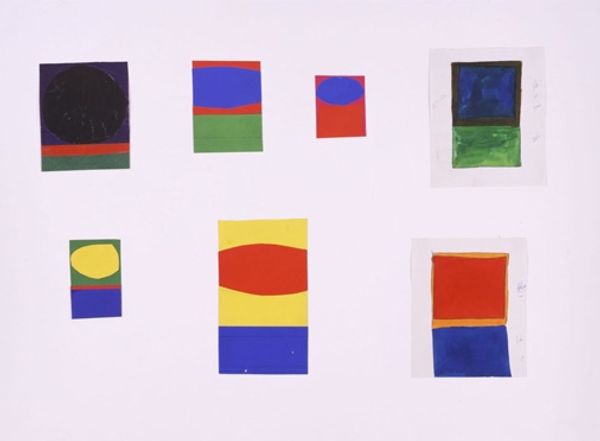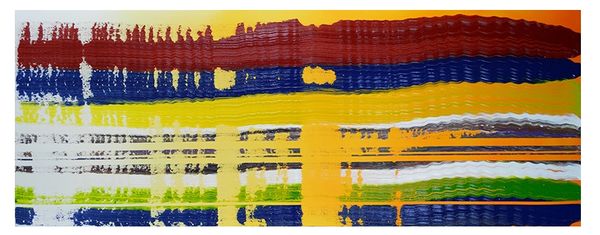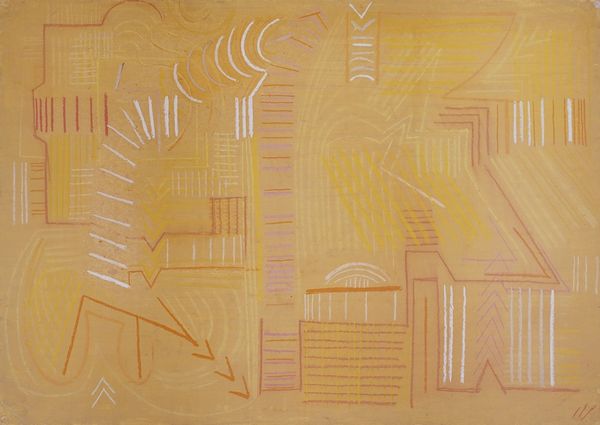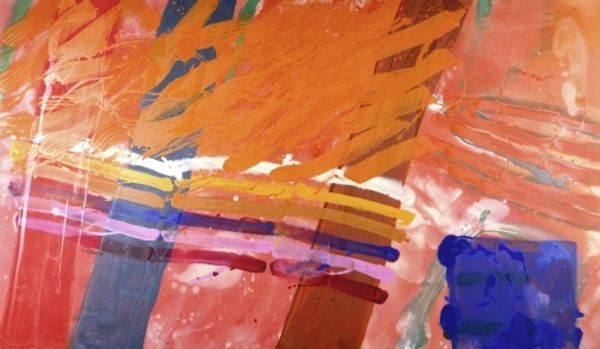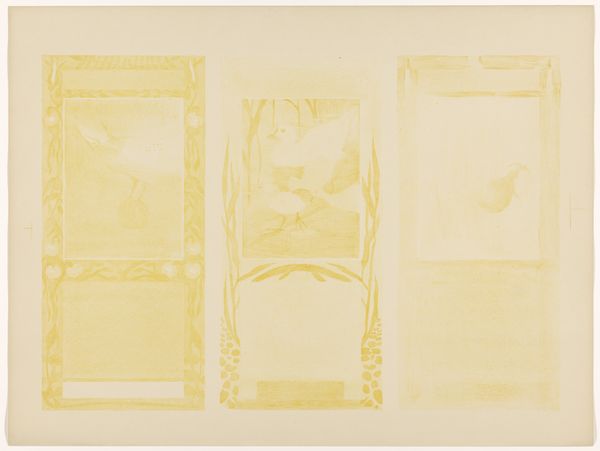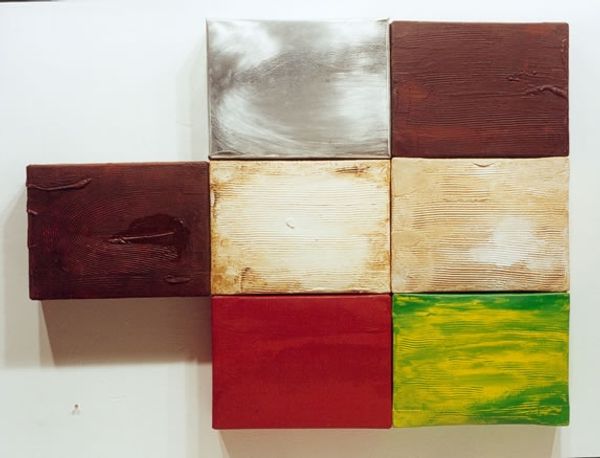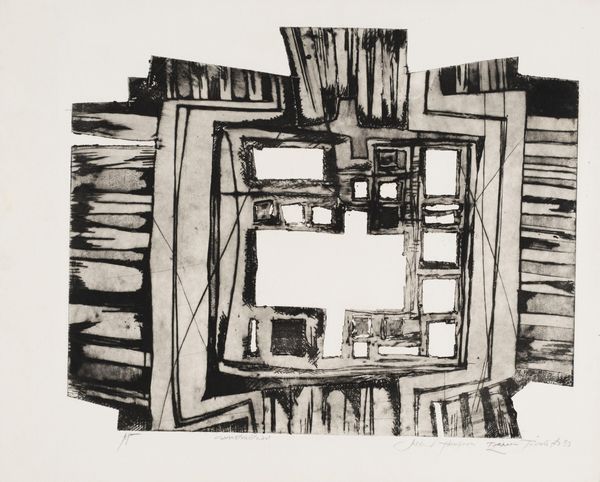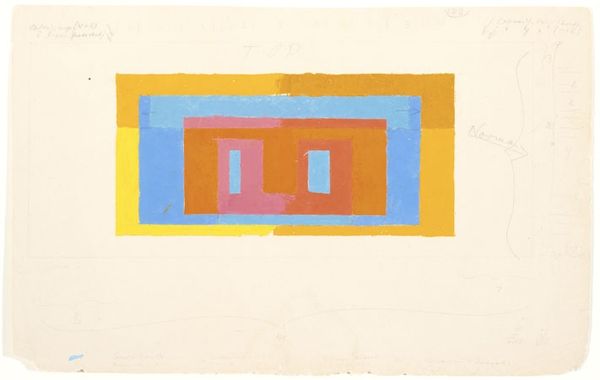
Copyright: Allen Ruppersberg,Fair Use
Curator: Standing before us is Allen Ruppersberg's "Honey, I Rearranged the Collection" from 2002, a mixed-media work incorporating screenprint and collage techniques. The piece is structured as a grid of nine panels. Editor: My first impression is one of organized chaos! The repeated image, differentiated only by color, is oddly soothing despite the underlying disjunction. The simple frames reinforce the sense of systematization, even scientific observation. Curator: Yes, Ruppersberg is well known for deconstructing visual codes. In this instance, we observe how a commonplace scene--seemingly the interior of a building or perhaps a shop--shifts meaning as it is presented through this variation of pop hues. I'm curious about the title in relation to its content, implying notions of domesticity but, to me, hinting to a deeper commentary. Editor: Absolutely. It appears the original source material could be a real estate listing? I immediately get a sense of impermanence, and this evokes an ambivalent state—desire but with trepidation, comfort blended with instability, an unsettling reflection on post-war ideals of domestic space. Curator: The screen-printing gives the images that mechanically-produced quality of, say, a Warhol print. Ruppersberg is exploring themes of displacement and alienation. It seems that by multiplying, changing color and repeating it like he does in "Honey," he transforms that mundane location into something unfamiliar. Editor: I agree. But let’s examine the technique. The composition is very interesting. Line dominates, rendering the image nearly as diagrammatic; then consider the contrast. In terms of formalism, what is happening is quite exciting. Curator: I believe it is also interesting to see that through an appropriation and repetition like the one in this work, Allen touches on concepts linked to a loss of cultural memory and collective anxiety of displacement. There is the suggestion of a building under construction. In doing so, this raises question marks linked with fragility or lack of stability of these symbols of power or protection. Editor: Ultimately, it feels less about architecture and more about a statement on the nature of collecting itself, transforming ordinary spaces into stylized representations. Curator: Yes. The artist explores the human fascination with categorizing and reshuffling cultural signifiers and representations through collage and recontextualization, as he plays with meanings through familiar imagery and materials. Editor: Definitely food for thought as we continue exploring Ruppersberg’s oeuvre!
Comments
No comments
Be the first to comment and join the conversation on the ultimate creative platform.
